Posted November 11, 2025 by Nicky in General / 16 Comments
This week’s Top Ten Tuesday theme is about books you’ve read (or want to read) that are outside your comfort zone. I read so widely/apparently randomly that it’s kinda hard to define what my comfort zone looks like, especially since each book holds the potential to expand it, but let’s see what I can come up with!
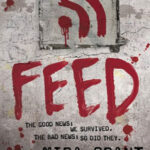

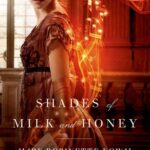
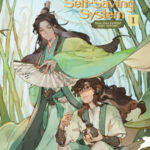
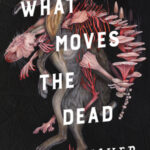
- Feed, by Mira Grant. Granted, I adore this one now, but I didn’t always. When I first read it, it made me feel reaaaally on edge and uncomfortable, because horror isn’t my thing and the idea of everyone being infected with a cocktail of viruses that could turn them into zombies at any time was… yeah, definitely dancing around on my anxieties.
- Eat Me: A Natural and Unnatural History of Cannibalism, by Bill Schutt. I just finished this one, but I think it counts; it’s not really a topic I’m interested in per se, definitely not for prurient interest, but I decided to give it a go because it wasn’t a subject I’m very familiar with, and new knowledge is always of interest to me. I need to write up my review of this one, because I just finished it last night!
- Shades of Milk and Honey, by Mary Robinette Kowal. By heavy contrast to the previous two, ahaha, this is a Regency-ish Austenesque fantasy. It is actually pretty squarely in my comfort zone now, but when I read it I tended to be allergic to anything that smacked of Jane Austen, wasn’t a romance fan, and in general wasn’t best positioned to enjoy it. I didn’t rate it very highly the first time, but I revisited and enjoyed it more, and particularly started enjoying Glamour in Glass, the second book.
- The Scum Villain’s Self-Saving System, by Mo Xiang Tong Xiu. This was my first danmei, and I really wasn’t sure whether I was going to like it. I remember reading it in a hotel room in Bath during a long weekend getaway with my wife, and just constantly making WTF noises at it — all I’d really understood going into the story was that the two main characters were canonically terrible at sex, and that some people really really loved the books. I don’t know why I picked them over Grandmaster of Demonic Cultivation or Heaven Official’s Blessing, which might’ve been less weird introductions to danmei… but hey, it ultimately worked. I finished the first book and decided that I did really need to know where it went. That said, the series still kinda sits on the edge of my comfort zone for a couple of reasons: the student/teacher relationship (which I feel is carefully managed and balanced in context, but is still on edge of what I’m okay with) and the fact that it’s a satire of a genre I don’t really know (the cultivation novel).
- What Moves The Dead, by T. Kingfisher. I am a wimp about horror. I’ve read a surprising amount of it for someone who isn’t a horror fan, one way or another, but it’s still not my comfy genre. What Moves The Dead was pretty brilliant, but it also freaked me out, dancing around the edge of my anxieties about contamination and disease.
- Spillover, by David Quammen. I hardly need to write an explanation of this anymore for regulars here, who won’t be surprised to see it in the list! Back when I read Spillover, I was deliberately forcing myself to be curious about something that terrified me: infectious disease. A popular science book seemed like a reasonably controlled way to do it. It wasn’t comfy reading for me, though it helped that spillover events don’t generally happen in UK back gardens, and that Quammen is very measured and careful in assessing risks. Now, of course, I have an MSc in infectious diseases (or I will once my graduation ceremony is held); Quammen really started something for me. It was also part of my initial attempts to read more non-fiction (which now constitutes about 30% of what I read), so, yeah, a great success all round.
- Crypt of the Moon Spider, by Nathan Ballingrud. This was an impulse read from the library, one I knew wouldn’t be a comfortable one for me given the premise. It ultimately turned out more uncomfortable for me than I’d expected with some vivid imagery (let’s just say it’s not one for the arachnophobic, and leave it there), and I didn’t love it.
- Yellowface, by Rebecca F. Kuang. This ended up being a five-star read for me, but I tend toward genre reads rather than this more literary sort of choice, so I really wasn’t sure how I’d find it. It felt like watching a trainwreck, with a main character both despicable and pitiable, and it was fascinating.
- The Gabriel Hounds, by Mary Stewart. I remember reading this as one of the first Mary Stewart books I read — I can’t remember if it was the first, that might’ve been Touch Not The Cat, but I definitely wasn’t sure whether it was going to be my thing. It was definitely before I started reading romance in general, at any rate. And I had a lot of fun!
- Solo Leveling (manhwa adaptation), by Dubu. I wasn’t sure whether Solo Leveling would be my thing: it sounded a bit dark, and very battle focused. Honestly, I’m not sure why I did give it a shot — but I ended up really sucked in, and quickly acquired the whole series. Now I definitely wouldn’t say no to trying the light novel, too.
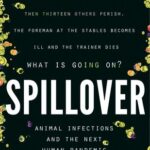
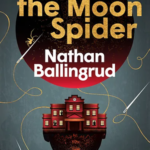
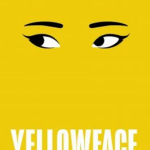


So there we go, I did manage to come up with ten! Very curious to see what others’ picks are.
Tags: books, Top Ten Tuesday
Posted November 4, 2025 by Nicky in General / 34 Comments
I thought this week’s Top Ten Tuesday theme would be kinda fun, and maybe a good prompt to get round to reading some books I’ve been neglecting, so… here we go. The prompt is the ten books you find from randomly grabbing books from your shelves — let’s see what I find on my shelves!
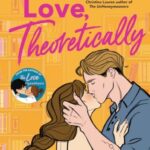
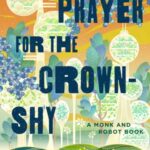



- Love, Theoretically, by Ali Hazelwood. I haven’t read this one yet. I’ve enjoyed a couple of Hazelwood’s books/stories, so I’m looking forward to getting around to it, though I have to be in the right mood to pick something described as a romcom. I get embarrassment squick really easily!
- A Prayer for the Crown-Shy, by Becky Chambers. The second book in the Monk & Robot duology. I didn’t love these as much as Chambers’ other work, but there’s always something kind about her work that I’m drawn to.
- The Book Eaters, by Sunyi Dean. Ah, definitely one I’ve been neglecting. I passed it up for review because I wasn’t quite sure about it, but ended up buying it a couple of years ago in Topping & Company in Edinburgh (an excellent indie bookshop).
- A Mourning Wedding, by Carola Dunn. This is fairly deep into the Daisy Dalrymple series, and probably one of the furthest along I’ve read, though I haven’t got to it yet in my reread (preparatory to actually finishing the series). By this point things are a little repetitive, to be honest, and it’s possibly time for me to let go of this series.
- Merchants of Doubt, by Naomi Oreskes and Erik M. Conway. I’ve been meaning to read this for ages — it digs into what is an absolute scandal of scientists manipulating public opinion with unfounded claims. I think this one is only getting more relevant, not less, though the examples will be out of date.
- Hot Earl Summer, by Erica Ridley. This is in the Wild Wynchesters series, and I’m a liiiittle behind. I should really catch up, because I’ve absolutely loved the books. This one sounds a bit over the top and bonkers, but hopefully it’ll be fun anyway.
- Heaven Official’s Blessing, vol 8, by Mo Xiang Tong Xiu. Ahhh, my beloved. This volume finishes off the story and contains the extras as well. There’s some really lovely stuff, though I can’t say it’s my favourite volume because it is a bit scattered, given it’s about a third of the main story plus disconnected extras. Still, a wonderful series.
- The Shards of Heaven, by Michael Livingston. Hm, I’ve forgotten everything I might have ever known about this one. Looking at the summary, I’m curious how it turns out, mixing magic and the fallout from the assassination of Julius Caesar. Might have to be in the right mood for it, though, since it’s a series and I can be quite slow with reading the next book sometimes.
- Istanbul: A Tale of Three Cities, by Bettany Hughes. It’s… been a while since I picked this one up. I want to learn more about this part of the world, especially beyond just Byzantium (which I have read about in the past), but this book’s daunting me, I must admit.
- Archivist Wasp, by Nicole Kornher-Stace. I’d almost forgotten about this one, but I’ve been meaning to read it forever. The ghost-hunting, post-apocalyptic setup sounds fascinating.



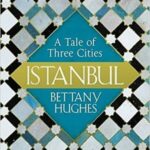

And there we go! I almost wanted to keep going and pull a few more random choices…
Tags: books, Top Ten Tuesday
Posted October 14, 2025 by Nicky in Reviews / 26 Comments
This week’s Top Ten Tuesday prompt is “Books I Wish I Could Read Again for the First Time“, which reminds me of a story an author I liked told — maybe it was Guy Gavriel Kay? — about someone going round with a list of books “to be given to me if I should end up with amnesia”, for just this purpose!
So what would I like to read again for the first time? Hmmm.

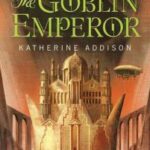
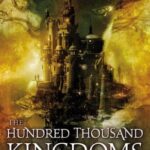

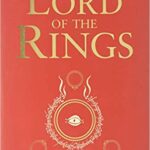
- The Carpet Makers, by Andreas Eschbach. I remember this blowing my mind. I can always reread it now — it’s been long enough that some of it might still get me by surprise — but I remember how captivated I was the first time, and I’d love to re-experience that.
- The Goblin Emperor, by Katherine Addison. A huge favourite of mine from the start. I worry if I keep rereading it, I’ll wear it out! So I’d love to read it with fresh eyes all over again.
- The Hundred Thousand Kingdoms, by N.K. Jemisin. This is another one where I remember the first read absolutely blowing me away — I remember that my now-wife was out so not available to chat as we usually did via… probably MSN Messenger? Maybe Trillian by that point? Anyway, I went to bed early with this book and devoured it. I haven’t read it in a while so it’d probably hit me differently now, and I’d like a plain ol’ normal reread too. But rereading it again for the first time sounds fun. I wonder if I’d like it as much if I got to read it for the first time right now?
- Tigana, by Guy Gavriel Kay. This one packs such a punch; it’d be fascinating to read it again without knowing where to brace myself, without knowing about all the little choices and betrayals that makes it so beautifully heartrending.
- The Lord of the Rings, by J.R.R. Tolkien. I’d actually rather like to read this for the first time without losing any of my memory of studying the various inspirations for Tolkien’s legendarium. What would I think of it if I were approaching it with all the academic context I learned later, compared to what I thought and felt when I first approached it as a teenager?
- Strong Poison, by Dorothy L. Sayers. This is totally beloved for me, and now so very very familiar from repetition of the book, radioplay, and TV adaptation. I don’t really remember what it was like to come fresh to it, and I’d love to. I’d need my memory wiped of Have His Carcase, Gaudy Night and Busman’s Honeymoon as well, though, to properly re-experience the tension.
- Pet, by Akwaeke Emezi. I remember flying through this one, just absolutely eating it up. It caught me by surprise how much I loved it. I know I didn’t like the prequel, Bitter, nearly as much — so I’d like to just revisit Pet and see what I think of it a second time.
- Farthing, by Jo Walton. This would be a very very difficult book to read for the first time right now in the current political climate, I’d say — but worth it. I don’t think I’ve ever reread it, because it’s a rough one, but it was my first book by Walton and I thought it was amazing. I’d love to revisit like that.
- In the Sanctuary of Wings, by Marie Brennan. For that moment of “oh my goodness” when you get to this point in the series and… No spoilers! I won’t tell you. But I’d love to go back to that culmination of the story and have that wow moment again.
- Assassin’s Apprentice, by Robin Hobb. I’ve found it really difficult to reread these books, knowing where the story goes… but I’d love to refresh my memory and revisit. Plus, reading it for the first time (at the same time as Mum did) was a lot of fun. Maybe she’d have to also have amnesia and read it again for the first time?



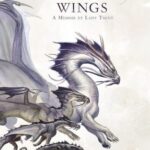
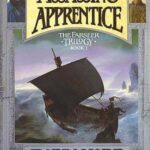
That said, there are definitely books without which I’m certain I’d be a different person, like Ursula Le Guin’s A Wizard of Earthsea and Susan Cooper’s Silver on the Tree. Maybe that’s true of any book you read, and this amnesia idea would be pretty dangerous… Food for thought!
Tags: books, Top Ten Tuesday
Posted October 7, 2025 by Nicky in General / 28 Comments
This week’s Top Ten Tuesday theme is about satisfying series, so let’s see what I can come up with!

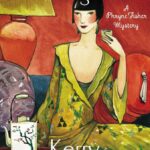


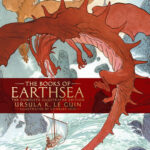
- The Peter Wimsey books, by Dorothy L. Sayers. At first, Lord Peter seems like a fairly standard series detective, with a distinctive background and manner, but no real chronology or development between books. But then in Strong Poison a love interest is introduced: she doesn’t appear in every book (e.g. The Nine Tailors or Five Red Herrings), but over the course of the books where she does appear, her relationship with Peter slowly develops until she is certain of her feelings and ready to accept his hand in marriage. The series ends with Busman’s Honeymoon, in which they’re married and different threads of their characters and experiences come together beautifully, as she understands his shellshock and he finds something of a shelter from it and the world. It’s a heck of a journey from Peter’s first appearance on-page, and very satisfying.
- The Phryne Fisher mysteries, by Kerry Greenwood. There is a thread of character development running through the stories, but they’re pretty episodic/mystery-of-the-week, and you can dip in at most stages and be able to follow the action. This series is satisfying because it has a few predictable elements (beautiful young men, lovely food cooked by Mrs Butler, ravishing fashion as worn by Phryne herself) and always delivers.
- The Memoirs of Lady Trent, by Marie Brennan. A perennial favourite of mine. Rereading it is just as satisfying as a first read, maybe more so, because you can see how the pieces will come together and how Isabella’s great discoveries will be made, what they’re leading to, etc. Each book adds on another block, until the last book — well. No major spoilers, this one’s worth experiencing for yourself. She also gets a personal arc of loss, grief, and second chances which is very satisfying too.
- The Imperial Radch books, by Ann Leckie. Mostly the original trilogy; I loved Provenance and liked Translation State, but the original trilogy is a safe happy place for me. Not that the books are in any way cosy, quite the opposite, but there’s something about Breq, Saivarden, and the cast of characters around them that just calls me back every so often.
- Earthsea, by Ursula Le Guin. I don’t know of many authors so willing to look back at an earlier book, realise that there was something unpleasant about it — something they didn’t mean to say — and then work with it/against it so ably, within the world. Le Guin realised that A Wizard of Earthsea was sexist as heck, and then spent the rest of the books replying to it within the bounds she’d already set. And the best part is that A Wizard of Earthsea isn’t bad, it has a lot of beautiful stuff to say and is a book that’s very important to me, but the other books add to it and play with it and make it better.
- The Dark is Rising Sequence, by Susan Cooper. I love these books so much. I read my copy to pieces, and every word of the books is familiar to me now, so much so that I’ve been giving it a long rest before reading it again. It plays with mythology and folklore, with huge and terrifying forces, and then at the end hands responsibility back to us. There are aspects that are a little iffy (the Dark rising with waves of immigrants who are then tamed by the land; I think this is mostly about invasions, like the Norse, the Saxons, the Normans, but it has worrisome connotations even paired with the scene where Stephen and Will defend an immigrant boy), and it probably feels very dated now to a young person coming fresh to it… but all the same, I love it.
- The Greta Helsing series, by Vivian Shaw. Okay, I haven’t actually read the most recent book, but I’m sure it’s going to be a lot of fun. I love the idea of a doctor who treats monsters, and I love Greta’s dedication to the task, and the found family of Ruthven and Varney and Fass and Greta and and and. I admit I’d thought the third book was intended to be the end, and it would’ve been a very appropriate one, but I’m excited to read further.
- Heaven Official’s Blessing, by Mo Xiang Tong Xiu. This story really goes places. It takes a while for all the pieces to come together, with two extended flashbacks filling in Xie Lian’s past, but when it does… wow. As a reader you certainly have to wait for the full payoff, and there’s a lot of suffering for Xie Lian (and various other characters, but primarily Xie Lian) along the way — but it really, really pays off. And there’s a reason there’s an AO3 tag, “Hualian invented love”: the devotion between Xie Lian and Hua Cheng is intense and their love story spans 800 years.
- Fairyland, by Catherynne M. Valente. I reread this series every so often because I love the narrative voice. I don’t always love Valente’s writing — sometimes it gets too lyrical and purple-prosey for me — but it hits a sweet spot with Fairyland, calling on the same kind of warm, parental narrator’s tone as C.S. Lewis’ best moments, and September’s whole journey is a lot of fun.
- A Side Character’s Love Story, by Akane Tamura. This series isn’t finished yet, but I already reread it once, because Hiroki and Nobuko’s relationship is just so cute. A slow-burner at first, but I love that they communicate and figure things out together, and the character growth they both get through the story. Plus there are some fun side characters, too.
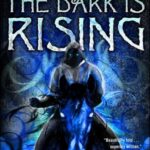
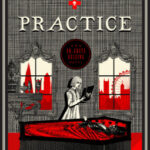

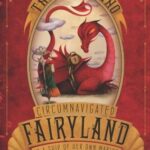
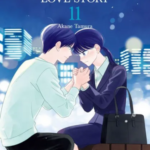
Okay, that took me a bit of thinking, and I’m sure I could come up with a whole different list if you gave me long enough — but there’s some nice variety here, so let’s go with this.
Tags: books, Top Ten Tuesday
Posted September 23, 2025 by Nicky in General / 36 Comments
It’s definitely beginning to feel autumnal here, with the temperatures falling and some very rainy days. I’m all for it — I love rain, especially listening to it against the windows while I’m reading, because I’m a cliché, and I’m also not super keen on very warm weather anyway (despite the problems I have with my poor circulation meaning I’m easily cold).
So it’s time too to think about my fall reading list, thanks to Top Ten Tuesday. I know there are a lot of books releasing soon that I’m interested in, so I’ve included a couple of those, but mostly I’m trying to leave those on my wishlist for Christmas, and focus on some of the neglected books of my TBR.
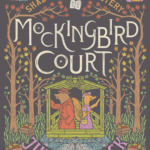


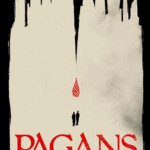
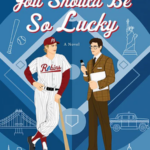
- Mockingbird Court, by Juneau Black. I love the Shady Hollow series, and the one is due out on 7th October, so it has to earn a place on my list. It’s also set in autumn, so it’s coincidentally seasonally appropriate, too! Even though there’s murder and danger, these books are so cosy to me — I can’t wait to settle down with this one.
- The Beauty’s Blade, by Feng Ren Zuo Shu. I haven’t read any baihe (f/f Chinese light novels, equivalent to the m/m danmei) yet, but I heard about this one and it sounds like a lot of fun. It’s due out in November, and I need to snag a copy right away so I can check whether my sister will be interested in it. (I mean, probably: badass ladies with swords who presumably end up kissing, it’s right up her street. But I do have to check for a happy ending.)
- The Library of Ancient Wisdom, by Selena Wisnom. I’d actually sort-of started this at one point, but got busy and didn’t dig into it properly, but it looks like a fascinating history of Mesopotamia through the library of Ashurbanipal, and I enjoyed the chapter I read. It looks like a bit of a chonker, but I think it’ll be one I gladly sink into once I give it the time.
- Pagans, by James Alistair Henry. I’ve technically started this as well, but it wasn’t the right moment, and now I want to get back to it. It’s a mystery set in an alternative universe where geopolitics has worked out very, very differently (e.g. no Norman invasion, Britain’s kind of a backwater, society is largely run by Anglo-Saxons with Celtcs being a heavily marginalised group, etc). Parts of it don’t seem to totally make sense, but I didn’t get that far into it, and I’m very curious how things work out, all the same.
- You Should Be So Lucky, by Cat Sebastian. It’s on my TBR for this month, but I haven’t got to it yet (given that I’ve been warned it deals with an amount of grief and loss, last week didn’t seem like the right time mentally). I really want to read it, though, so it’ll probably be one of the next books I pick up! I love Cat Sebastian’s romances in general, and I feel like she’s also always improving as a writer.
- The Duke at Hazard, by KJ Charles. Another one that’s on my September TBR but hasn’t been read yet. This one’s definitely a priority — I don’t know why I’ve waited so long on it. I love pretty much all of KJ Charles’ work, so I expect to enjoy it.
- The Posthumous Papers of the Manuscripts Club, by Christopher de Hamel. This is a bit of a random choice, but it’s been on my shelves for a while and I’d love to dig into it. I really enjoyed Meetings with Remarkable Manuscripts, and this one has in-page colour illustrations as well, so it should be fascinating. It’s a bit of a chonker, so I might not schedule it for the same month as the other chunky books I’m thinking about!
- Folk Song in England, by Steve Roud. I like a lot of modern British folk, and the efforts of singers and groups like Jon Boden (and Spiers & Boden), Fay Hield, Eliza Carthy, Seth Lakeman and Bellowhead have given me quite the appreciation for traditional songs and their many variations. It’s another chunky book, so it’s a little intimidating, but I’m sure I can get to it!
- The Disabled Tyrant’s Beloved Pet Fish, by Xue Shan Fei Hu. This sounds absolutely nuts as a concept, and I really want to dig in. I want to finish my reread of another isekai-type danmei, The Scum Villain’s Self-Saving System, first… but once I have, I really want to get to this one, especially as it isn’t super-long (four volumes, I think?).
- Paladin’s Hope, by T. Kingfisher. I’ve been loving Kingfisher’s Saint of Steel books, and this is the next up! It looks quite a bit shorter than the last one, but hopefully it will do justice to Piper and Galen. Galen deserves some happiness now!


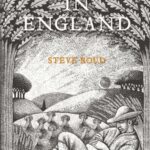

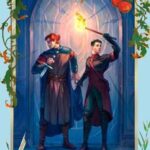
Yes, yes, I know — a very varied bunch. Very curious to see what other people are hoping to read soon!
Tags: books, Top Ten Tuesday
Posted September 9, 2025 by Nicky in General / 26 Comments
This week’s Top Ten Tuesday theme is “villains”, which I’m finding pretty tricky to fulfil… but let’s see what I can do!



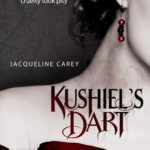

- Shen Qingqiu, from The Scum Villain’s Self-Saving System (Mo Xiang Tong Xiu). Well, okay, the original Shen Qingqiu is not that inventive as a villain… and to say we’re talking about Shen Yuan mostly removes his claim to be on this list. But I thought I’d be funny and give a nod to him for anyone else who knows the fandom. The real villain is Shen Yuan’s internalised homophobia and general obliviousness to Luo Binghe’s feelings, though, am I right?
- White No-Face (Bai Wuxiang), from Heaven Official’s Blessing (Mo Xiang Tong Xiu). This guy is a genuine villain. No spoilers for his true identity, but he torments Xie Lian and orchestrates his fall from grace, and makes it so that he can’t die no matter what happens to him. Xie Lian suffers immensely just from that, but White No-Face also gets into his head and warps his reality, trying to damage his essential goodness. He’s a hell of a villain, even without getting into the spoilery stuff.
- Anaander Mianaai, from Ancillary Justice (Ann Leckie). Anaander is a really fascinating villain, divided against herself due to her many bodies, and somehow managing to hold it all in balance and keep secrets against herself. She’d be run of the mill as a mere tyrant, but her war against herself makes her fascinating.
- Melisande Shahrizai de la Courcel, from Kushiel’s Dart (Jacqueline Carey). Melisande is a complicated figure, with her own motivations that from her point of view are perfectly reasonable. She’s a villain because we care about the characters she moves against, and she’s amoral on her way to her planned victory… but if she’d succeeded in her aims, history might’ve cast her as a hero.
- Roland, from the Kate Daniels series (Ilona Andrews). This one’s a long story, much of it spoilery for anyone who hasn’t read the whole series. There’s never any doubt, though: Roland will crush anything that doesn’t go the way he plans.
- Kossil, from The Tombs of Atuan (Ursula Le Guin). The Nameless Ones are formless, dark and terrifying, but they’re like forces of nature. Kossil is self-serving, cruel, and motivated by worldly power. Her evil is so mundane compared to the dark weight of the Nameless Ones, which… actually makes her more awful.
- Governer David Tate, from Feed (Mira Grant). A right-wing conspiracy taking advantage of a zombie plague is all too realistic, so I couldn’t pass this one up. It’s just the tip of the iceberg, of course (further awfulness follows in the later books). But no spoilers…
- The Company, from The Murderbot Diaries (Martha Wells). It looms large over Murderbot’s existence, so much so that Murderbot won’t even say the name of the Company and edits it out of everything it says and remembers. Capitalism’s everything in the Corporation Rim, and arguably the whole system is the villain here, but the Company is certainly a potent avatar of it.
- Lancelot, from The Winter King (Bernard Cornwell). It’s rare for Lancelot to be cast as a villain — and admittedly he’s a very petty one — but this one’s memorable because it’s a very unusual choice to portray Lancelot as a small and cowardly run-of-the-mill villain, rather than some kind of tortured hero.
- Regal Farseer, from Assassin’s Apprentice (Robin Hobb). Regal’s pretty much never likeable on the page, and his arc is pretty obvious from the outset, so in a way he’s a very obvious and unsubtle villain, and not exactly a favourite of mine. Still, he’s certainly memorable.


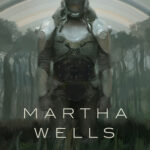


It took me a while, but I did it! I’m very curious what villains other people will name, though I spotted a lot of people going off-piste this week, so far…
Tags: books, Top Ten Tuesday
Posted August 26, 2025 by Nicky in General / 34 Comments
This week’s Top Ten Tuesday prompt is a non-bookish freebie, but nothing totally unbookish was coming to mind. Instead — prompted by my new reading nook — I thought of one of my favourite first lines: “I write this sitting in the kitchen sink.” (That’s from Dodie Smith’s I Capture the Castle.)
So, here’s a list of my reading spots over the years, some odder than others.
- The stairs. I did this at both my grandparents’ house and at home. At my grandparents’ house I’d often just sit on the second-to-top step and dangle my legs through, since the steps had gaps between them. At my parents’ house I tended to start on the top step and move down a step for each chapter read (and then back up, again, a chapter at a time); I don’t really remember why, but apparently it was fun?
- The shower. This one requires a bit more explanation, I guess. At some point, my grandparents had a small cupboard (maybe an airing cupboard?) converted into a very small shower room. I used to get in there and read, in part because I could lock my sister out, and in part just because I liked small spaces. I sat in the shower cubicle or on the postage-stamp of floor outside it, and I guess that felt like a den! I grew out of this eventually because I got long legs (though I never got very tall) and it stopped being comfy. Bah.
- By the front door. I used to like watching people come and go, and especially watching Mum get home from work, so I’d read sat by the front door, peering out through the distorted glass window every so often. I remember Dad bringing me snacks of apple and cheese there, and my teddies set up to look out of the window!
- In bed, in a “tent”. I had a high sleeper bed from when I was quite little, and one thing I used to do was drape my duvet over the top of the railings and tuck it under, creating a little tent. My parents used to oblige this sometimes by letting me have a sleeping bag as well, so I would “camp” in my own bed. I also had a torch, so I could read riiiight inside the “tent”.
- Under the high sleeper, with a blanket hung over the side. With a blanket hung over the side and the wall behind, and a desk built in on one end, it all became very cosy underneath the bed. It was a great place to read, since I had a sofa under there and a light — and also a good space to play in and around. The bed part was often the deck of a ship, and the part below the cabin, and I both a fierce pirate captain (on top) and a helpless captive with nothing to do but read (when in the “cabin”). Even once I was older I kept this up for cosiness’ sake, with slightly less imagination.
- Sat on a wall outside the childminder’s house. Sometimes it was the only way to get some peace and quiet to read, with her kids running riot alongside my sister (I was a bit older). I have no idea how I found that comfy, but I know I stayed out there reading for hours sometimes. I think the childminder used to worry she’d get in trouble with Mum, but I’m pretty sure Mum just knew what I was like and would ignore it…
- With my back against a radiator. I am not very good at staying warm, so in winter I can often be found curled up to a radiator. Dad put guards on all the radiators at home, but when I lived with my grandmother for a while after finishing my second degree, I used to go into the spare room to sit against the radiator there. I also did that in my last flat…
- On the floor, with rabbits snuffling around me. This was mostly in our flat in Belgium, where the bunnies roamed freely because the floor was tiled rather than carpeted and there was less for them to nibble. Sometimes I hang out with the bunnies and read now, but less so, because Biscuit is fiendishly jealous of anything I’m paying more attention to than I am to her. She’s bitten my books in the past. Still, the funniest story is when I used to read with a reading light, because we had a studio flat and my wife needed to sleep, but I couldn’t. One night, Hulk snatched my reading light and hopped off with it, the light bobbing along with her… I woke my wife up laughing about it.
- On the floor, leaning against a hedgehog. An inflatable hedgehog from Ikea, I hasten to add. They’re no longer sold, but when I saw one in their showrooms a while ago, my dad made it his mission to obtain not one but many. They’re hard to find now — it took me ages to find a page with a picture — for which you can probably thank my dad, as I think he has “adopted” several for future need. Anyway, my personal hedgehog companions Norman and Hogglestock are now roaming the new house, so I’m sure I’ll be returning to my hedgehog-cuddling reading spot soon enough.
- Below the bed, in a recliner. At the new place, I have a high sleeper once more to act as a spare bed for when I have trouble sleeping and need to leave the main bedroom and go to bed separately. It helps save space, which I have filled with a recliner. It’s very comfy! And I might just drape blankets over the side again, or even ask my wife to sew some kind of curtains for it…
Probably I’ve done other weird things when reading, since I do have a love for small spaces and cosy spots — I have sized up one of our cupboards at the new place and considered taking a pillow and blanket in there to read for a while (with my ereader, since there’s no light). I’m not promising I’m never gonna do it, though I’ll have to do so before we put anything away in there if I’m going to: I don’t think the fans, boxes, etc, will be super comfortable company.
What about you? Any reading nooks or stories about reading in weird places?
Tags: Top Ten Tuesday
Posted August 19, 2025 by Nicky in General / 27 Comments
This week’s theme from Top Ten Tuesday is all about the big chonky books. I don’t have stats on all my books, since I left Goodreads in a huff some years ago and then only settled into StoryGraph a year or two later… but let’s see what I can do.
I’ll skip the most obvious (The Lord of the Rings) and the technical (Control of Communicable Diseases Manual), I think! I also realised that the illustrated Earthsea I have is probably chonkier than any of these, but I didn’t think of it. So here we go.
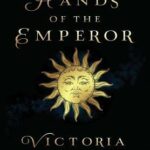

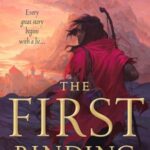


- The Hands of the Emperor, by Victoria Goddard (899 pages). Some editions even run to ~1100 pages, but mine’s “only” 899, and apparently one of my chonkiest books. I’ve read this one, and really love it — I want to reread it soon. It’s wish fulfillment, about dismantling an empire and turning it into something fairer and kinder, but the relationship between the former Emperor and the main character, Cliopher, is really lovely. There’s also At the Feet of the Sun, the sequel (at 790 pages). It looks just as chonky on the shelf, though! I have to get round to it soon, but I’ve waited long enough thanks to a poor attention span that I really do want to reread the previous book first.
- Kushiel’s Dart, by Jacqueline Carey (901 pages). I’m surprised this is so long, actually, because I know I’ve completely inhaled it in the past, and these days I seem to find 400 page books quite intimidating. It’s the start of a fantasy trilogy that I really love, though sometimes the violence (consensual and otherwise) is a lot to read, even with the conceit of Phèdre’s abilities.
- The First Binding, by R.R. Virdi (929 pages). I don’t remember anything about this one! I haven’t read it yet, and I think I had it as an e-ARC. Oops.
- Vanished Kingdoms: The History of Half-Forgotten Europe, by Norman Davies (830 pages). This one’s still on my TBR, and I’m still looking forward to it, but… it’s just waiting for me to get round to it.
- The Ember Blade, by Chris Wooding (824 pages). This is another one where I don’t really remember anything about it, it’s just been on my TBR a while. It sounds like pretty traditional fantasy, like it makes a point of being so even, so… maybe it’ll be fun?
- Istanbul: A Tale of Three Cities, by Bettany Hughes (900 pages). I’ve liked some of Hughes’ work before, which I read because she got an honorary degree from Cardiff University at my first graduation ceremony. So I’m curious about this one, but it’s quite a commitment, so it’s been waiting on my TBR for the right mood.
- The Thousand Deaths of Ardor Benn, by Tyler Whitesides (784 pages). Again, this sounds like pretty traditional fantasy, could be fun, but I haven’t got round to it yet.
- Making History: The Storytellers who Shaped the Past, by Richard Cohen (708 pages). Understanding who is writing the history books is a very important thing, so this sounds very interesting. Though slightly daunting!
- European Travel for the Mysterious Gentlewoman, by Theodora Goss (708 pages). I haven’t read the first book yet, so this one’s waiting behind that one. I didn’t realise this was so chonky — I have the ebook edition!
- Plagues Upon the Earth: Diseases and the Course of Human History, by Kyle Harper (704 pages). As ever, can’t resist something about infectious diseases! I think it’s been on my TBR since last year? Ish? But I thought I’d probably enjoy it more when my MSc is all done and dusted.

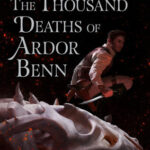

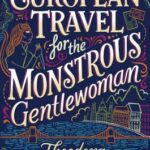

So there we go, those’re my chonkers — mostly still waiting to be read!
Tags: books, Top Ten Tuesday
Posted August 12, 2025 by Nicky in General / 20 Comments
This week’s Top Ten Tuesday theme is based around recommending books to get people out of a reading slump. That’s tough, because there are so many reasons why someone might be in a slump — but I’ll give it a shot and try to come up with a selection, anyway!
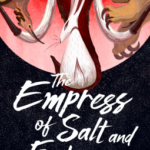
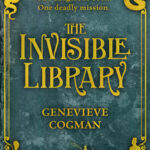

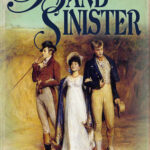
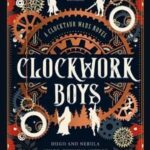
- The Empress of Salt and Fortune, by Nghi Vo.
This is the first of a series of loosely linked stories, introducing Chih and their work in gathering stories and records for the Singing Hills monastery. You could choose any book of the series, but this one introduces the world and style well. Also, it’s a novella, so it’s pretty short.
- The Invisible Library, by Genevieve Cogman.
All the books in this series are total romps: what if there was an interdimensional library, whose librarians can visit multiple worlds to collect books? Everything exists on a sliding scale between fantasy and sci-fi, with dragons and fae slipping between worlds and sometimes allying with, sometimes opposing the library. The main character gets assigned to a steampunky world, and meets up with an archetypical Great Detective… but also there’s fae and werewolves and all kinds of other shenanigans. It’s a series, as well, so this is the gateway into a lot of fun (the second book is partly set in an alternate Venice!).
- Miss Phryne Fisher Investigates (AKA Cocaine Blues), by Kerry Greenwood.
Mysteries are often quick reads, and almost all the Phryne books are pretty slim volumes, while Phryne herself is a fashionable, whip-smart delight. The books do tackle some horrible topics at times (such as child abduction in Flying Too High), but generally everything comes out OK in the end… and Phryne tackles danger very stylishly.
- Band Sinister, by KJ Charles.
How about a touch of romance? Band Sinister is my favourite, though Charles has a lot of really good options available — if you’re more into fantasy, for example, you might be interested by The Magpie Lord or maybe Spectred Isle. This one feels like a pastiche of Georgette Heyer, and features a really lovely exploration of someone embracing their sexuality, along with a heavy focus on informed consent and clear communication. I adore it: the first time I read it, I was struggling with insomnia, and spent the whole book trying not to giggle too loudly and risk waking up my wife.
- Clockwork Boys, by T. Kingfisher.
I found this book (and the sequel) absolutely flew by. This one’s a book I read so recently that I haven’t even had chance to revisit it yet, but I’m pretty sure I will. It’s a fascinating world, though seen narrowly through the small band of characters who have been tasked with a seemingly impossible job to save their city. It’s linked with a wider universe of other books, like the Saint of Steel series, but Clockwork Boys and The Wonder Engine stand alone together pretty well, so there’s both the option of a series to get lost in, and a fairly self-contained story to begin with.
- A Case of Of Mice and Murder, by Sally Smith.
This was another recent read for me, but I know I’ll be returning to it. It’s a pretty cosy mystery, set within the grounds of the Inner Temple in London. The main character is a lawyer who has spent most of his time in the Inner Temple, avoiding the world outside — but he’s gentle and kind, and there’s a lot of heart in this and the sequel (A Case of Life and Limb). I look forward to reading more in this series!
- Emily Wilde’s Encyclopaedia of Faeries, by Heather Fawcett.
This series combines fantasy and romance with a touch of mystery: Emily Wilde is an academic studying faeries, and in each of the books she ends up using her knowledge to solve any issues that arise. It’s a fairly recent read for me, but I look forward to rereading the series at some point. I actually read the second and third books quite close to their release dates, which is practically unknown for me — but I love the mix of whimsy (thanks to the fairytales) and Emily Wilde’s stubborn practicality, and it reminds me of another favourite series in some ways (Marie Brennan’s A Natural History of Dragons).
- Everything is Tuberculosis, by John Green.
Tuberculosis is kind of my special topic. A few years back, when I was really struggling with anxiety, I read the advice somewhere that curiosity is the opposite of anxiety: one opens you up the world, the other wants you to close doors, and breeds on uncertainty. Given that infectious diseases really scared me at the time, I decided to face ’em head on, and read books like David Quammen’s Spillover and Kathryn Lougheed’s Catching Breath to that end. That led to me writing my BSc dissertation on tuberculosis. Long story short, those books are getting a bit out of date now, but John Green’s just became available, and it’s a really good introduction to a deeply fascinating disease (which deserves far more attention — and aid money allocation — than it receives). Sometimes the best way to break a reading slump is by reading something totally different, and though the topic is heavy at times, Green’s style is super readable.
- The Eagle of the Ninth, by Rosemary Sutcliff. Sutcliff’s books are often considered children’s books, but her attention to historical detail (based on available sources at the time) left her books feeling very fresh and vivid to me, both as a kid and now. The Eagle of the Ninth is my personal favourite, though I have to put in a word for Warrior Scarlet on my mother’s behalf (I’d never hear the end of it if I didn’t). I love the characters, and Marcus’ journey from being an arrogant young centurion freshly posted to Britain to loving the British life (and a British woman, though the romance subplot is minimal).
- The Scum Villain’s Self-Saving System, by Mo Xiang Tong Xiu.
How about trying something a little different? This is a work in translation, part of a genre called “light novels”, and in particular it’s a “danmei” — a romance between two men. This particular one features a guy from our world being sucked into a story that he read and got passionately cross about, with his instructions being to “fix” the story (with certain constraints) from within. In the process, he completely changes the story he slipped into, changing the character of Shen Qingqiu from being a rather slimy villain to being a conscientious teacher, friend and (eventually) husband. It’s different in style and outlook to the other stories I’ve been recommending, and I found it a surprisingly speedy read… and it’s one I’ve returned to a couple of times.
To be fair, it probably isn’t the best starting point, because it’s an affectionate parody of “cultivation” stories, and plays around with the genre quite a bit. You might be better off starting with something like Heaven Official’s Blessing (which I’ve read and adore, but is quite a commitment for the full payoff) or Grandmaster of Demonic Cultivation (which I haven’t read yet), both also by MXTX. But I started with SVSSS, and I can’t say I regret it, even if I appreciate some aspects of it a lot more now on reread than I originally did.
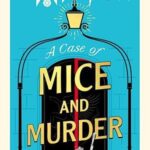


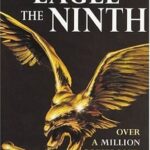

And that’s it! At different times, these have all helped me through reading slumps, either as new reads at the time or as familiar rereads.
Looking forward to seeing what everyone else has picked!
Tags: books, Top Ten Tuesday
Posted August 5, 2025 by Nicky in General / 24 Comments
Today’s Top Ten Tuesday post is a genre freebie, and at first I thought I’d reprise favourite non-fiction, with some updated choices. But it’s not that long since I did that, so instead I thought I’d talk about something extremely hyper-specific: classic crime, as republished by the British Library Crime Classics series!





- The Judas Window, by John Dickson Carr. I finished this one last night, so it’s freshest in my mind as I come to write this post! I’m not always a fan of John Dickson Carr, and some of his most lauded works have left me cold, but I really liked this one. The only thing I was kinda “eh” about was the actual murderer, but the courtroom stuff is great and it’s a well worked-out locked room mystery that doesn’t seem too farfetched.
- Fear Stalks the Village, by Ethel Lina White. There’s something completely febrile about both of White’s novels in this series, and in pretty much all the short stories of hers that I’ve read as well. Her books are really, really tense, and I enjoyed both, but this one wins out because The Wheel Spins had an unworthy male protagonist who shouldn’t have got the girl. Warning, though: as I mention in the linked review, there are several suicides in the book, described fairly clearly.
- Death of an Author, by E.C.R. Lorac. It’s difficult to pick a favourite E.C.R. Lorac book. I love her series detective, Macdonald, a lot: he’s intelligent and humane, and never so much a policeman he forgets to be human. If there have to be cops, you want them all to be like Macdonald. This one is not a Macdonald book, but it was a five-star read for me, with a clever mystery that I actually wanted to solve myself. Highly recommended.
- Death in Captivity, by Michael Gilbert. I’m kind of mixed on including this one, because it’s not a favourite (and I only rated it 3/5 stars, “liked it”). But part of why I didn’t love it is that it’s a very fine evocation of life in a PoW camp, an experience Gilbert had himself. Something about the matter-of-factness of discussing the awfulness made this a difficult read for me — but a worthwhile one. It’s unusual for a mystery of the period, and a book deeply, deeply grounded in World War II.
- Smallbone Deceased, by Michael Gilbert. I was trying not to play favourites and pick more than one by the same author, but I really wanted to choose this one as well because it’s really stuck in my head (and might even merit a reread). As easily as he made the reader bring to life and inhabit a PoW camp, he evokes Lincoln’s Inn.
- Crimes of Cymru, ed. Martin Edwards. It’s hard to pick a favourite among the short story collections of this series, because quite often it’s not purely the content of the stories or the theme of the anthology, but the fact that each one is a selection of stories from different authors and different times, giving a kind of overview. But this one is themed around Welsh authors/writing about Wales, so how could I not choose it? I could’ve stood to see more Welsh authors chosen (rather than just stories about Wales), but I was pleased by the inclusions.
- Twice Round the Clock, by Billie Houston. There are lots of examples of country house mysteries in the series, of course, but this one sticks in my mind because of how well timed it is. The action is kept ticking along very literally, with each chapter ratcheting up the tension. It’s very classic, with melodrama and mysterious poisons, and it enjoys itself with it.
- Death on the Down Beat, by Sebastian Farr. In this one, a piece of musical score is a clue, which makes it pretty unique! It’s also epistolary, which helped it stand out, and though I had a few quibbles, I think things like that helped it stand out and seem quite fresh (even if much of the rest of the plot isn’t that innovative).
- The Murder of a Quack, by George Bellairs. Bellairs’ novels aren’t paragons of literary merit, this must be admitted, but there’s something very classic about them. They’re like the platonic ideal of what you expect from a Golden Age crime story with a police detective. They’re also kind; the characters feel human, not like caricatures, and despite it being a fairly generic mystery plot, you can care about it.
- The Mysterious Mr. Badman, by W.F. Harvey. This one’s a bibliomystery, though the book is really a bit of a MacGuffin. It’s one of those British Library Crime Classics which felt quintessentially like a classic mystery, and it doesn’t revolve around the police. I don’t actually remember a lot about it now except that I liked it, but as far as I’m concerned, that’s fine! It was a pleasant read and did exactly what I wanted from it.





So there we go! Honestly I could’ve filled up the list with E.C.R. Lorac’s books, probably; I’ve had a lot of fun with the British Library Crime Classics series, but her books are a particular highlight. I’m sure I’ve missed some lovely ones, especially the ones I read longest ago, but
(Connoisseurs might deplore the utter lack of Christianna Brand, but I’m not a great fan of her work, sorry!)
Tags: books, British Library Crime Classics, Top Ten Tuesday















































































